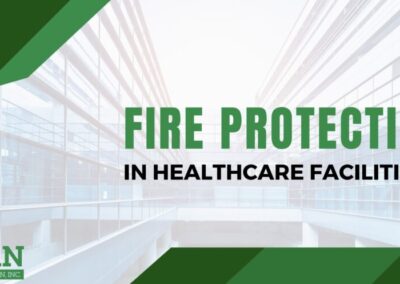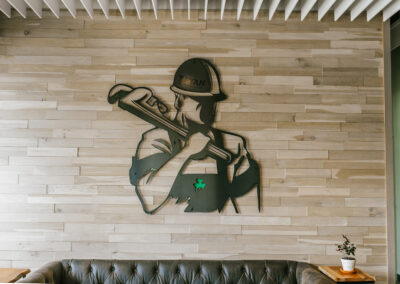On occasion, the results of an Obstruction Investigation require a system flushing. This process clears the piping and components of potential blockages by using a pressurized water source.
There are two methods commonly used to flush sprinkler piping – the hydraulic method and the hydropneumatic method. The hydraulic method consists of flowing water from the yard mains, sprinkler risers, feed mains, cross mains, and branch lines respectively in the same direction in which water would flow during normal operation. The hydropneumatic method uses special equipment and compressed air to blow a charge of about 30 gallons of water from the ends of the branch lines back into feed mains and down the riser, washing the foreign material from the base of the riser.
Successful flushing, by either method, requires establishing sufficient velocity of flow in the piping to remove the foreign material. Flow rates are outlined by the NFPA and vary by pipe diameter and the type of pipe. While system flushing sounds simple in concept, it can be difficult and challenging for the inexperienced. Unless properly trained, the foreign material may not be removed properly or the interior of the building and its contents may be damaged. Cleanup of discharged water and the operating the of specialized equipment can create challenges too.
Our sprinkler professionals are highly trained and are experienced in flushing various types of systems, including wet, dry, pre-action, in-rack and ESFR (early suppression, fast response). Our team can provide the expertise required to keep systems fully operational and up to code all while minimizing impact on the daily routine of building occupants.

